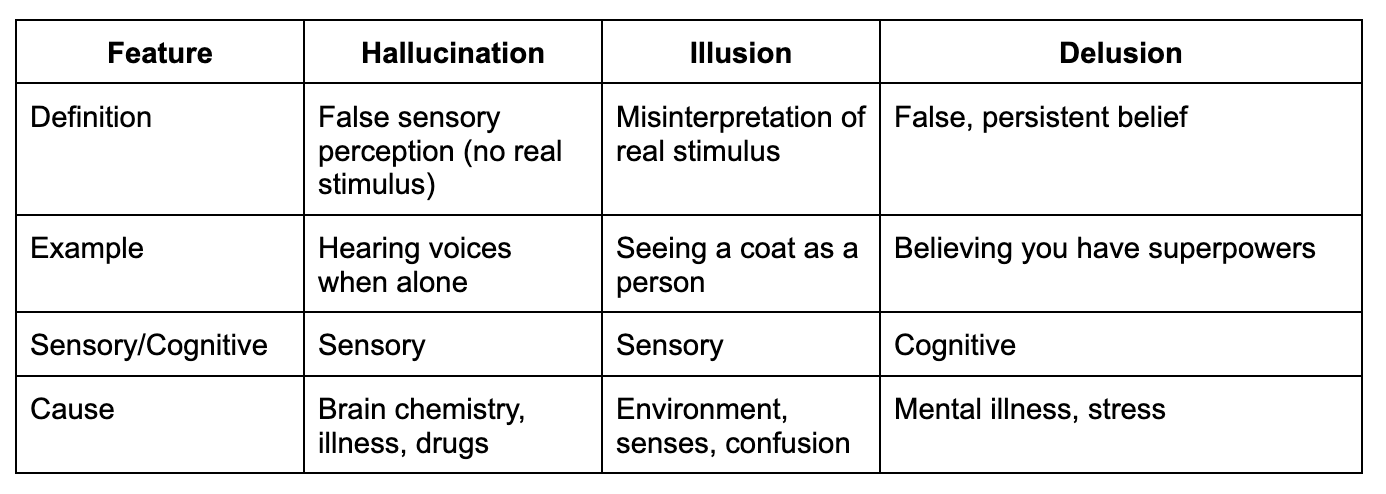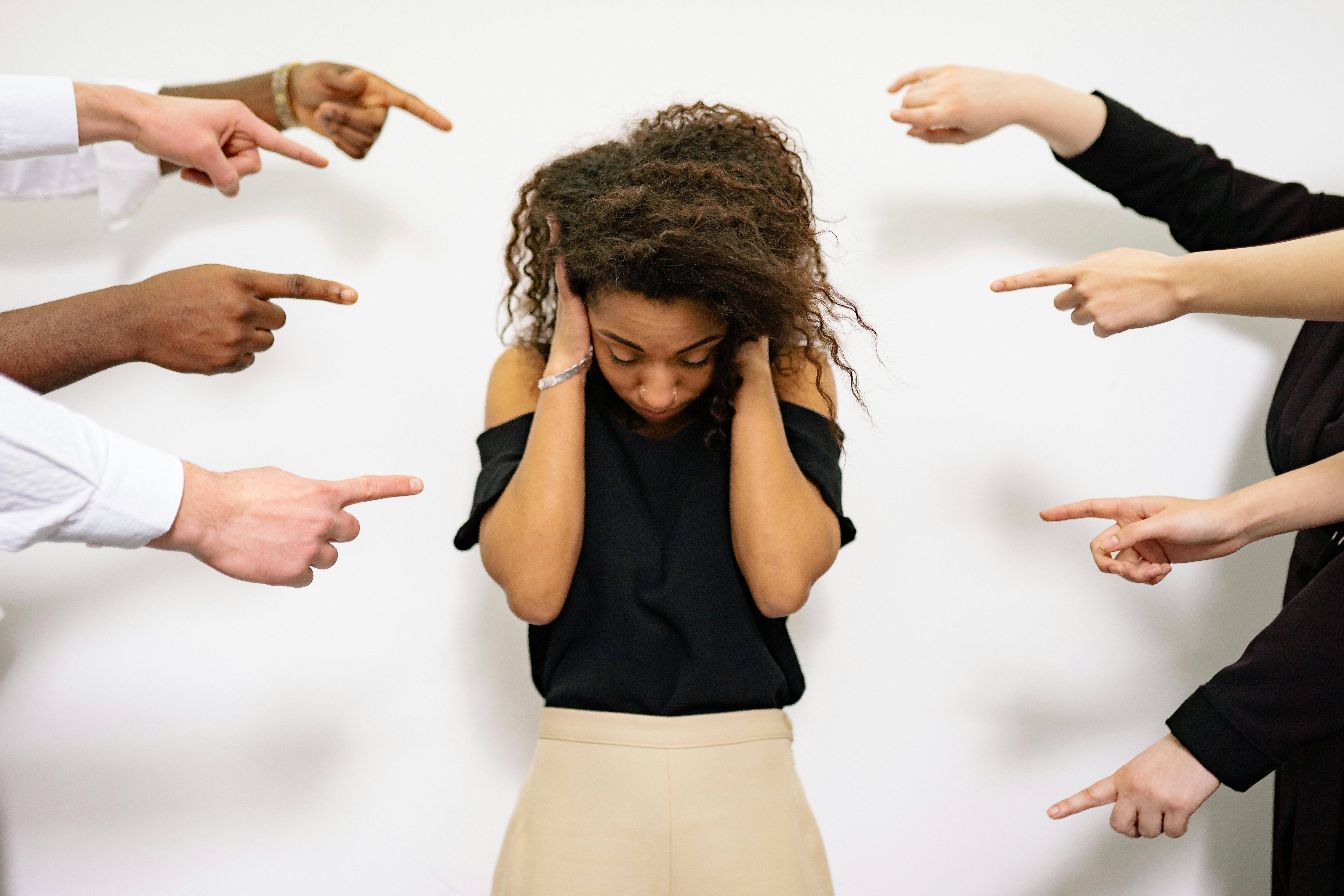Ever wondered what are hallucinations and why your neighbour insists he saw pink elephants at 3 am (without any party in sight)? Well, hallucinations are not just reserved for quirky sitcoms or wild stories—they’re real clinical phenomena that anyone can experience, sometimes under the oddest circumstances. In this complete guide, we’ll demystify hallucinations, explore their seven distinct types, offer expert insights, and sprinkle in a dash of humour… because understanding “seeing things” shouldn’t be a dreary ordeal!
What Are Hallucinations
Hallucinations are “false perceptions” arising when your mind conjures up sensations—like sights, sounds, smells, tastes, or touches—that aren’t genuinely present. Picture your senses throwing a surprise party, forgetting to invite reality.
These vivid experiences can stem from mental health conditions, physical illnesses, medication side effects, or sometimes from simply missing out on a few hours of beauty sleep.
- They’re not illusions (which are misinterpretations of real stimuli) or delusions (which are persistent, false beliefs).
- Anyone can have hallucinations—from grieving individuals to folks dealing with high fevers or chronic neurological issues.
- Knowing whether these spectral visitors are “just dreams” or a sign of something deeper is really what separates scribbling about pink elephants from calling your doctor.
Why Do Hallucinations Happen?
Pull up a chair: hallucinations can arise for many reasons. Brain chemistry, neurological diseases, psychiatric disorders, substance use, sleep deprivation—these are just a few suspects lined up in the hallucinatory whodunit. Sometimes, the causes are temporary (like a fever). Other times, they’re long-term, such as in schizophrenia or Parkinson’s disease. Medication side effects and sensory isolation (think of blindness or deafness) can also provoke hallucinations.
So, sure, stress can make you “see stars”—but seeing a parade when there’s none on your street? That’s a matter for a professional. Let’s get witty for a second: if your dog starts speaking French… It’s time to ask your doctor about your health, not enrol your pup in language school.
The 7 Types of Hallucinations: Let’s Break It Down
Hallucinations are not a monolith; they come in flavours, each with its curious quirks. While most reputable sources list five major types, expanding to seven brings clarity to experiences often overlooked.
Visual Hallucinations
What Are Visual Hallucinations?
Visual hallucinations mean seeing things that simply aren’t there—no, not just misplaced keys, but people, animals, objects, flashes, or patterns that only your mind perceives.
Common Examples
- Seeing people or animals who aren’t present
- Observing strange lights or shapes dancing across the room
Real-Life Impact:
Imagine seeing a partner walk into the kitchen when they’re actually on a business trip—confusing, to say the least! In some neurological conditions, like Charles Bonnet Syndrome, visual hallucinations are routine visitors.
Auditory Hallucinations
What Are Auditory Hallucinations?
Think about hearing something with no physical source—voices, music, clicks, or even the odd knock at the door when nobody is there.
Typical Experiences
- Voices giving commands, sometimes comforting, sometimes unnerving.
- Music, noises, or repetitive sounds
Clinical Context
These are the bread-and-butter hallucinations in schizophrenia, but they also pop up in dementia, delirium, and after sleep loss. If you ever “hear voices,” take it seriously and seek medical advice—it’s one piece of a puzzle that professionals can help you solve.
Olfactory Hallucinations
What Are Olfactory Hallucinations?
“Olfactory” is a fancy word for smell. Picture catching a whiff of roses—or rotten eggs—without a flower or omelette in sight.

Sample Scenarios
- Smelling smoke with no fire (or dinner ruined for nothing)
- Scents linked to memory or trauma
Conditions
These can occur due to temporal lobe epilepsy, during migraines, or sometimes as early signs of neurodegenerative disorders.
Gustatory Hallucinations
What Are Gustatory Hallucinations?
These are all about taste—sudden sourness, saltiness, or the metallic tang of “nothingness.”
Key Moments
- Tasting something odd when there’s nothing in the mouth
- Food suddenly tasting unpleasant, or oddly familiar, for no reason.
Why They Happen
Most common in epilepsy, gustatory hallucinations can occur in other brain conditions, and sometimes due to medication side effects.
Tactile Hallucinations
What Are Tactile Hallucinations?
Feeling is believing—or so our nerves say, often wrongly. Tactile hallucinations are sensations of touch, pressure, vibration, or even movement inside the body that aren’t real.
Quick Examples
- The classic “bugs crawling on the skin” (formication)
- Feeling touched or poked when alone
Underlying Issues
Drug withdrawal, neurological problems, and menopause can trigger these peculiar sensations.
Sexual Hallucinations
What Are Sexual Hallucinations?
This type covers erogenous or orgasmic sensations without any real stimulus. Sensations range from feeling aroused to perceiving explicit sexual interactions, sometimes accompanied by imagined touch or taste.
Situational Contexts
Often feature in cases of epilepsy, PTSD, and rare psychiatric conditions. Uniquely, these hallucinations may involve multiple senses at once.
General Somatic Hallucinations
What Are General Somatic Hallucinations?
Somatic hallucinations involve sensations not specific to skin: imagine internal organs shifting (when they’re quite stationary, thank you), or odd vibrations in the muscles.
Where They Occur
These can be part of neurological illnesses, puberty, or sometimes intense psychological stress.
Hallucinations vs. Delusions vs. Illusions

What Causes Hallucinations?
Hallucinations can be triggered by many factors. Here’s an in-depth look at the main causes, from psychiatric conditions to sleep loss and sensory deprivation.
Mental Health Conditions
Psychiatric illnesses are prime culprits when it comes to hallucinations:
- Schizophrenia: Over 70% of those affected experience hallucinations—most commonly auditory (hearing voices), but also visual or tactile sensations.
- Bipolar Disorder: Particularly during manic or depressive episodes, hallucinations may arise.
- Severe Depression: Hallucinations occur in some cases, often as part of psychotic depression.
- Dementia: Lewy body dementia and Alzheimer’s disease can cause visual and auditory hallucinations as cognitive functions decline.
Medical and Neurological Disorders
Hallucinations aren’t just a psychiatric concern; they emerge in several medical contexts:
- Epilepsy: Certain seizures can trigger visual, auditory, or even gustatory (taste) hallucinations.
- Parkinson’s Disease: Visual hallucinations are common, affecting up to half of patients.
- Migraines: Some experience visual “auras” (e.g., zigzag lines) before headaches.
- Brain Tumours: Growths in sensory-processing areas can induce hallucinations of sight, sound, or smell.
Substance Use and Withdrawal
Chemistry class, but make it clinical: the substances you ingest or withdraw from can alter perception.
- Hallucinogenic Drugs: LSD, psilocybin, PCP, amphetamines—these artificially stimulate the senses and the imagination, often resulting in vivid multi-sensory hallucinations.
- Alcohol Withdrawal: Delirium tremens, associated with quitting alcohol, notoriously features frightening hallucinations.
- Prescription Medications: Certain drugs for Parkinson’s, depression, or even antibiotics can cause hallucinations as side effects.
Sleep Deprivation
If burning the midnight oil sounds poetic, just wait until the brain starts inventing reality. Extended wakefulness decreases the ability to distinguish real stimuli, lapsing into vivid hallucinations—especially after two or more sleep-free days. These appear as:
- Hypnagogic Hallucinations: Occur at sleep onset, often visually striking (floating shapes, sounds).
- Hypnopompic Hallucinations: Surface during awakening.
- Personality Disorganisation: After 100 to 200 hours of sleep loss, hallucinosis and severe confusion typically emerge.
Sensory Deprivation
Remove normal sensory input, and the brain finds creative ways to fill that void. Brief periods of near-total sensory isolation—absence of light, sound, or other stimuli—trigger hallucinations, even among healthy people:
- Ganzfeld Effect: Starvation of visual cues causes the brain to “paint” sights; people see patterns, objects, or even detailed scenes.
- Float Tanks & Isolation Chambers: Even just 15 minutes of deprivation sparks visual and auditory hallucinations in most participants. These are projections, not reactions to external reality.
- Release Phenomena: The brain’s drive for stimulation creates hallucinations when deprived of sensory input, a process rooted in the central nervous system's release of stored experiences or patterns.
Individuals experiencing blindness or deafness often develop “phantom” perceptions—hallucinations that substitute for lost input. In fact, many researchers view these experiences as demonstrations of how brains crave stimulation and, when in short supply, manufacture it internally.
Hallucinations: Diagnosis and Treatment
Diagnosing Hallucinations
Doctors catalogue symptoms, snoop on medical history, and sometimes order blood tests or brain scans (just to rule out those pink elephants, really).
Treating Hallucinations
Treatment hinges on the cause—eliminating infection, changing meds, tackling mental illness, or sometimes just catching up on sleep.
- Antipsychotics or antidepressants for psychiatric causes
- Medication adjustment for neurological causes
- Counselling, cognitive behavioural therapy (CBT), and support groups for chronic cases
Living with Hallucinations
Support from family and professionals is crucial. Hallucinations should not be ignored—catch them early, and they can often be managed or even eliminated.
Conclusion: Living with Hallucinations
So, “what are hallucinations?” They’re vivid sensory experiences arising independently of real-world stimuli, affecting millions worldwide, sometimes with colourful flair. The seven types—visual, auditory, olfactory, gustatory, tactile, sexual, and general somatic—offer a panorama of the mind’s creative (and sometimes mischievous) powers.
On the bright side, science, medicine, and support systems can help those afflicted. Whether you’re merely curious or seeking answers for a loved one, remember: pink elephants aren’t always bad news—but sometimes, they’re a reason to schedule that doctor’s visit.


.png)




